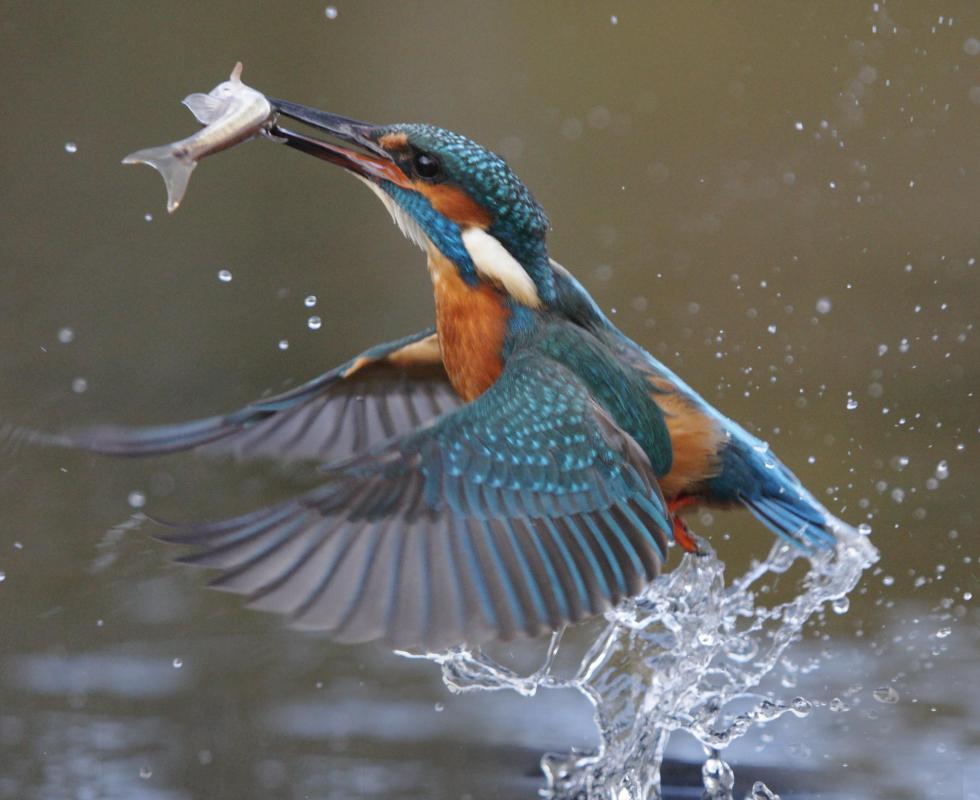At AllThingsNature, we're committed to delivering accurate, trustworthy information. Our expert-authored content is rigorously fact-checked and sourced from credible authorities. Discover how we uphold the highest standards in providing you with reliable knowledge.
What is a Laughing Kookaburra?
A laughing kookaburra, or Dacelo novaeguineae, is a beige-colored bird found in forests, woodlands and urban areas in parts of Australia, Tasmania and New Zealand. It belongs to the Halcyonidae family of kingfishers, although its diet consists mainly of small rodents, reptiles and amphibians rather than fish. The most distinguishing feature of these birds is the loud "chuckling" calls they make twice a day. Kookaburras also differ from many other birds in that older siblings help care for chicks before leaving the nest.
The original range of the laughing kookaburra extended throughout eastern and southern Australia. They were introduced to southwestern Australia, New Zealand and Tasmania in the early 1900s. Kookaburras have flourished due to their ability to adapt to changing environments. Although they're primarily found in eucalyptus forests and dry woodlands, some have made their homes in city and town parks and backyards.

With an average length ranging between 15 and 18 inches (39 to 45 cm), the laughing kookaburra is the biggest species of kingfisher. They typically weigh between 13 and 16 ounces (368 to 455 grams), with females being larger than males. Kookaburras have a stocky appearance, with short necks and large heads. Unlike their brightly colored kingfisher relatives, they have beige or light brown backs and wings, white heads, a brown stripe around each eye, gray chests and brownish-red tails. Males also have pale blue spots on their wings.

The laughing kookaburra makes a series of raucous calls that resemble laughter every morning and evening, which has earned it the nickname "bushman's alarm clock." These calls, which have been recorded and used as jungle sound effects in several films, are the birds' way of announcing their territory. They also use simpler calls for courting, locating others, asking for food and alerting others to nearby predators.

Lizards, frogs, snakes, rodents, smaller birds and large insects make up the bulk of the laughing kookaburra's diet, although it also eats fish if other food is scarce. The birds dive down to catch their prey in their 4-inch (10 cm) beaks, then they hit it repeatedly on a branch or let it fall to the ground. This makes it easier for the kookaburras to swallow their food whole.
Mating occurs in October, which is early spring in the southern hemisphere. A dominant female lays two or three eggs in empty termite mounds or hollowed tree trunks, while "helper" females lay additional ones in the same nesting area. Once the eggs hatch in about 29 days, the entire family works together to raise the chicks. Kookaburras generally live to be 11 years old in the wild and up to 15 years old in captivity.
Frequently Asked Questions
What is a Laughing Kookaburra?
The Laughing Kookaburra is a large, iconic bird native to Australia, famous for its distinctive call that sounds like echoing human laughter. It belongs to the kingfisher family and is known for its robust, stocky build, with a large head, a prominent beak, and a white or cream-colored body with dark brown wing plumage and a striped brown tail.
Why is it called the Laughing Kookaburra?
It's called the Laughing Kookaburra because of its unmistakable vocalizations that resemble a chorus of raucous laughter. This call is often used to establish territory among family groups and is most commonly heard at dawn and dusk, earning them the nickname "bushman's clock" in their native Australia.
What does the Laughing Kookaburra eat?
Laughing Kookaburras are carnivorous birds that have a varied diet. They primarily feed on insects, worms, crustaceans, and small reptiles. They are also known to eat small birds and rodents. They hunt by perching on a suitable lookout and pouncing on prey, which they kill by beating against a branch or rock before swallowing it whole.
Where can you find Laughing Kookaburras in the wild?
Laughing Kookaburras are native to eastern Australia but have also been introduced to parts of Western Australia, Tasmania, and New Zealand. They inhabit a range of environments from humid forest to arid savanna, as well as suburban areas where they can become quite accustomed to human presence.
How do Laughing Kookaburras reproduce?
Laughing Kookaburras are monogamous and often mate for life. They nest in tree hollows or excavated out of arboreal termite nests. Females typically lay a clutch of two to four white eggs, which are incubated for around 24 days. Both parents, along with offspring from previous broods, help in feeding and caring for the chicks.
Are Laughing Kookaburras endangered?
Laughing Kookaburras are currently not endangered and are classified as a species of least concern by the International Union for Conservation of Nature (IUCN). They have adapted well to human-altered landscapes, which has helped maintain their population numbers. However, habitat destruction and changes in climate could impact their status in the future.
AS FEATURED ON:
AS FEATURED ON:













Discuss this Article
Post your comments